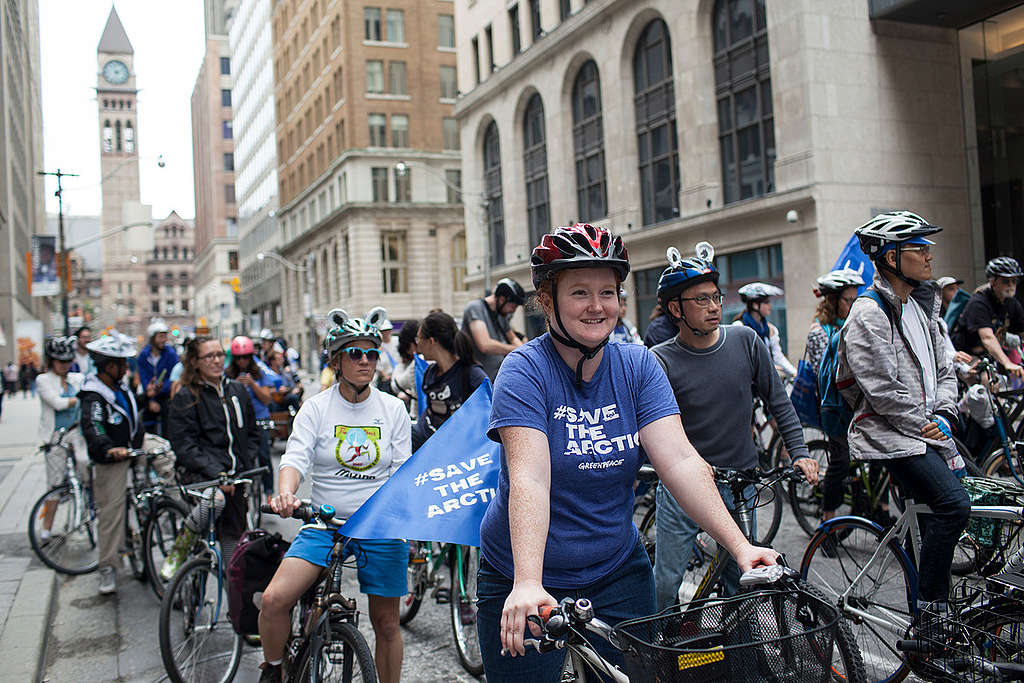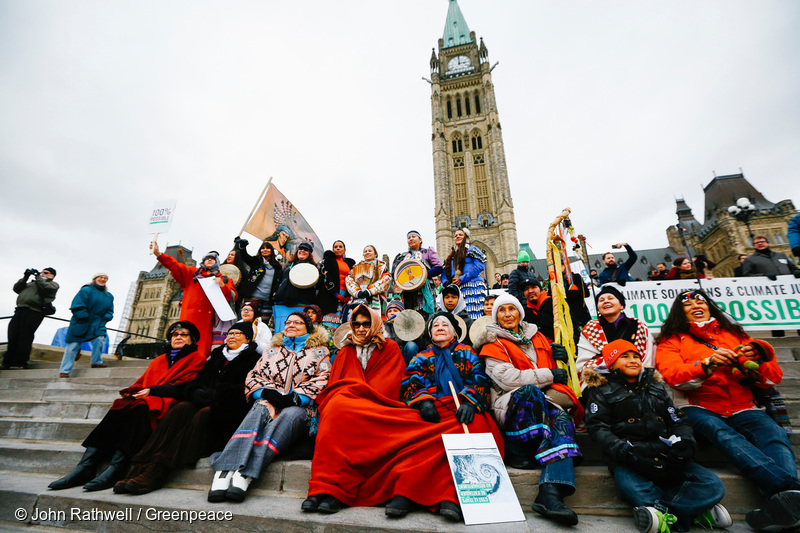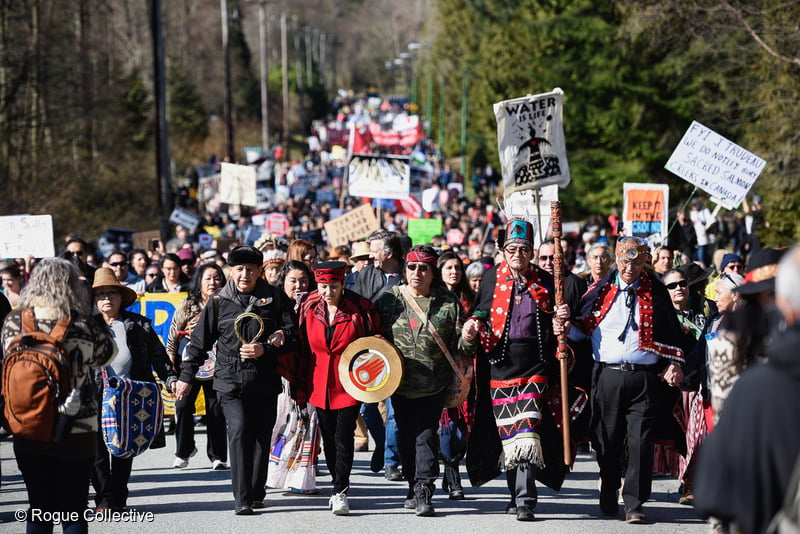
To pull wool over someone’s eyes is an expression that dates back to the 17th century Europe, when judges wore wigs made of wool. If a deceitful lawyer was able to successfully lie to a judge, and get away with it, this was figuratively comparable to pulling the wig over the judge’s eyes. When it comes to forestry, one could say governments are pulling ‘wood’ over our eyes.
THE IMPORTANCE OF BIODIVERSITY
Only British Columbia and Quebec reported meeting their 2020 target of 17% protected areas. At the very last minute, we saw the Quebec government rushing to reach this target, only to congratulate itself afterwards. It’s a nice headline for the press, but beyond this target, did the Quebec government really reach the objective?
The primary objective of protected areas is to breathe new life into biodiversity, which is at the heart of our collective survival. Biodiversity is as much about plants, animals and forests as it is about our own genetic diversity that exists within us. However, in less than 50 years, we have seen 60% of animals disappear from the planet forever. The footprint of our extractive activities plays a major role in this statistic. The 1990s cod stocks collapse in Eastern Canada is but one grim reminder of the consequences of over-exploiting nature. Its impact on food security and the regional economy is still being felt today.
Science tells us that we must protect, at a minimum, 30% of the remaining ecosystems in Quebec. Assigning this protection evenly and equitably across the province will be needed to address the biodiversity problem, but also to make nature — as essential as it is to our well-being — more accessible. With that said, a quick look at how our governments are progressing suggests they’ve lost the plot.
FORGOTTEN COMMUNITIES
Neither the nine Innu communities of Quebec, nor the numerous communities living in the areas of interest of big forestry companies, found their needs met in the Legault government’s announcement. The ancestral rights of the Innu communities were not respected in the designation of protected areas. The specific forest protection demands of frontline communities were not met either. These requests were well founded, and have been on hold for far too long. We’re talking here about areas like Basilières-Kael, the Parc des Sept-Chutes in the Laurentians, and sectors like the Péribonka River and Lake Kénogami, in the Saguenay-Lac-Saint-Jean region. These communities recognize that their local forests keep local socio-economic activities (e.g. tourism, foraging, and hiking) alive, provide people’s means for sustenance (e.g. hunting and fishing) and serve as a buffer to climate change (including floods, heat waves, etc.)
A PREMEDITATED STRATEGY
Even by demonstrating public will and despite an exhaustive study (in french) showing the multiple benefits of forest protection for the region, proposals such as the one for Mount Kaaikop have been given the cold shoulder by the government. Why are these communities still waiting? Why was the majority of the protected areas announced mainly in Northern Quebec? Certainly for the same reasons that motivated Quebec to remove a marine refuge and feeding ground for beluga whales in Saguenay (a place of interest for the LNG terminal) – industry interests. In 2018, an internal document from the Ministère des Forêts, de la Faune et des Parcs (MFFP) unveiled a strategy aimed at curbing the creation of protected areas in 11 administrative regions of the province. We are stuck with a government that bends to the wishes of big industry.
THE ‘FORESTRY MINISTRY’
We talk about a public forest, but one need look no further than the recent changes to the Forest Regime to understand that the interests of the MFFP are not those of the general public. Any change to the Regime requires the involvement of forest users — and seeing the MFFP avoiding its duty to consult by calling these “only tweaks”, is to play on semantics. Neither the aboriginal communities, nor all forest engineers, nor the Fédération québécoise des coopératives forestières, nor the Regroupement des communautés forestières de la Fédération québécoise des municipalités, nor you nor I have been consulted. Only the Quebec Forest Industry Council (QFIC) was really invited to the discussion table. This means that a few big industry players spoke on behalf of all of us. It’s no wonder the MFFP is nicknamed the Ministry of Forestry.
Worth noting is that these modifications of the Forest Regime aim to increase the harvest reserves by 300% in 2021— a precursor to its National Wood Production Strategy, which plans to double operations by 2080. A strategy that, during the consultations, sought to convert 25% of our forests into areas of wood production intensification (AIPL), i.e. artificial forests. For private forest owners, you who manage the forest better, don’t be surprised either if someone tries to cut your forests, because there is a consolidation strategy to keep feeding the big sawmills.
GOVERNMENT INCONSISTENCIES
Everywhere throughout the Belle Province one hears stories of communities being robbed of their corner of nature, their oasis. The government creates protected areas and then removes them. The government subsidizes projects and then cuts them off. A sad example of this inconsistency is the Par Monts et Vals trail. This 65km forest trail, meant to link 7 towns and villages, has been gradually decimated in recent years by logging. Yet a decade earlier, the government had injected $150,000 to revitalize these trails. The large loop that linked Sainte-Agathe-des-Monts, Ivry-sur-le-Lac, Val-des-Lacs, Lantier, Sainte-Lucie-des-Laurentides, Val-David and Val-Morin, has lost century-old trees, hikers, and small ponds built by nature’s architects: the beavers.
PUTTING THINGS INTO PERSPECTIVE
The MFFP has a utilitarian mandate to manage forest animals and ecosystems. But with the caribou on the edge of extinction, conservation projects being set aside and the Ministry going further into debt each year to subsidize the forestry industry, its loyalty does not seem to be to the population — or with the planet, for that matter.
By protecting ecosystems, we protect what protects us. Beyond the moral question, these forests are our pantry, medicine, the reason to diversify our regional economies, the places to recharge our batteries and much more. We all depend on a healthy environment and the abundance of nature. A forest is more than just wood. For those among you who seek to protect the forest, for you who seek to better manage it, it is necessary to remain vigilant, because the cutting of all private and public forests is now part of a new strategy to nourish a business model that remains unsustainable — both ecologically and economically.
[Stay tuned for the next blog in this series, we will explore the impact of this business model on jobs and the economy].

Fundraising for Greenpeace is an incredibly powerful way to make a difference and take action for the planet.
Take action


